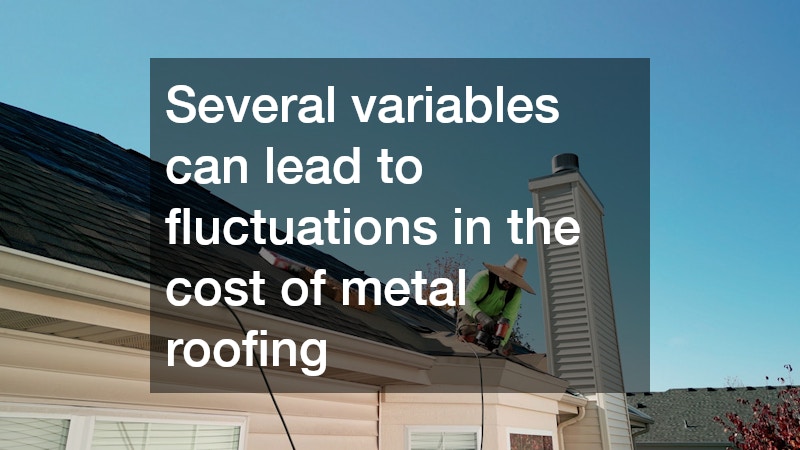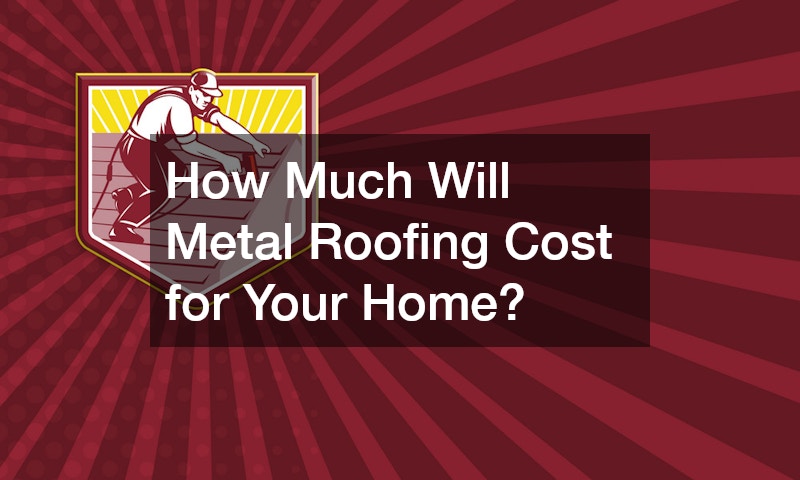When considering a new roofing option for your home, metal roofing stands out as a durable and sustainable choice. However, understanding the costs associated with this type of roofing is crucial before making a decision. In this article, we explore different aspects that contribute to the overall expense of metal roofing.
Understanding the Initial Costs of Metal Roofing
The initial cost of metal roofing can vary widely, depending on the type of metal used, as well as the size and complexity of your roof. Common materials like aluminum and steel are generally less expensive than copper or zinc, influencing the total expense significantly. It’s important to also consider the quality and thickness of the material, as higher-grade options may increase upfront costs but offer more longevity. Other elements like roof pitch and complexity can drive up installation costs due to the additional labor and equipment required. By doing a thorough assessment of these factors, homeowners can better understand what to expect in terms of initial expenses.
Additionally, geographic location plays a significant role in determining the cost of metal roofing. Prices can vary dramatically between regions due to differences in climate, local labor rates, and material availability. For instance, homes in areas with harsh weather conditions might need thicker or specially treated materials, which could increase costs. Moreover, urban areas typically experience higher labor costs compared to rural locations, impacting overall installation prices. It’s beneficial for homeowners to research local market conditions to gauge expected expenses accurately.
The choice of roofing contractor is another crucial factor that impacts the overall cost of metal roofing. Experienced contractors might charge more for their expertise but can ensure a high-quality installation that minimizes future repair needs. Obtaining multiple quotes from different contractors can help homeowners get a comprehensive view of the pricing landscape. Furthermore, a detailed contract outlining the scope of work and material specifications can prevent unexpected expenses during the project. An informed decision in choosing the right contractor can ultimately affect both the quality and cost-effectiveness of metal roofing.
Long-Term Savings and Maintenance Costs
While the initial investment for metal roofing might be higher than traditional shingles, the long-term savings can be substantial. Metal roofs have a longer lifespan, often lasting 40-70 years, dramatically reducing the need for replacement. This durability can offset the higher upfront costs, as frequent repairs and replacements commonly associated with other materials are less likely. Additionally, metal roofing can increase the energy efficiency of your home due to its reflective properties, resulting in lower heating and cooling expenses. By understanding these long-term benefits, homeowners can view metal roofing as a cost-effective choice in the long run.
Maintenance costs for metal roofing are generally lower compared to other roofing types. Routine maintenance primarily involves ensuring the roof is clear of debris and occasionally inspecting the integrity of the metal and its finishes. The resistance of metal roofs to elements such as extreme weather and pests can lead to fewer repair expenses over time. However, it’s crucial to address minor issues promptly to prevent more significant problems down the line. The low maintenance nature of metal roofs makes them an attractive option for homeowners seeking a balance between initial investment and long-term cost savings.
Insurance savings can also contribute to the affordability of metal roofing in the long term. Some insurance companies offer discounts to homeowners with metal roofs due to their durability and fire-resistant properties. These savings can provide a further financial incentive for opting for metal roofing alternatives. By exploring insurance options and discussing potential savings with providers, homeowners can gain a clearer picture of the overall financial benefits. These reductions in insurance premiums can accumulate over the years, contributing to making metal roofing a more financially viable choice.
Factors Affecting Metal Roofing Cost Variations
Several variables can lead to fluctuations in the cost of metal roofing, starting with the type of metal chosen. Copper and zinc are premium materials that naturally come at a higher price point but offer unique aesthetic and longevity benefits. Aluminum and steel are more economical options but still provide excellent durability and resistance. Beyond materials, the scope of the project, including roof size, shape, and architectural complexity, can significantly impact costs. Roofs with intricate designs, multiple angles, or steep pitches may require more extensive labor and specialized skills, driving up installation expenses.
The time of year can also affect metal roofing costs due to seasonal demand fluctuations. Roofing projects conducted during peak seasons might incur higher labor charges due to increased demand. Conversely, scheduling installations during slower periods could lead to potential discounts or savings. It’s beneficial for homeowners to plan their roofing projects with seasonal trends in mind, allowing for better pricing opportunities. Understanding these time-based factors can help in scheduling a cost-effective roofing installation without compromising on quality.
Market conditions and economic factors further influence the price of metal roofing materials. Commodity prices, tariffs, and availability of materials can cause shifts in pricing, affecting overall project costs. Staying informed about these economic variables allows homeowners to make timely decisions and potentially purchase materials at lower costs. Engaging with reputable suppliers and contractors who can provide insights into market trends can be advantageous in navigating these fluctuations. By considering external economic factors, homeowners can achieve a better understanding of the potential cost variations in their metal roofing projects.
In conclusion, while the expense of metal roofing can initially seem daunting, an in-depth understanding of its costs and savings potential reveals it as a viable long-term investment. By considering factors such as material choice, installation complexity, location, and long-term benefits, homeowners can make informed decisions about metal roofing. This roofing option not only offers durability and efficiency but also an opportunity for reduced maintenance and insurance costs, ensuring a worthwhile investment for any home.



